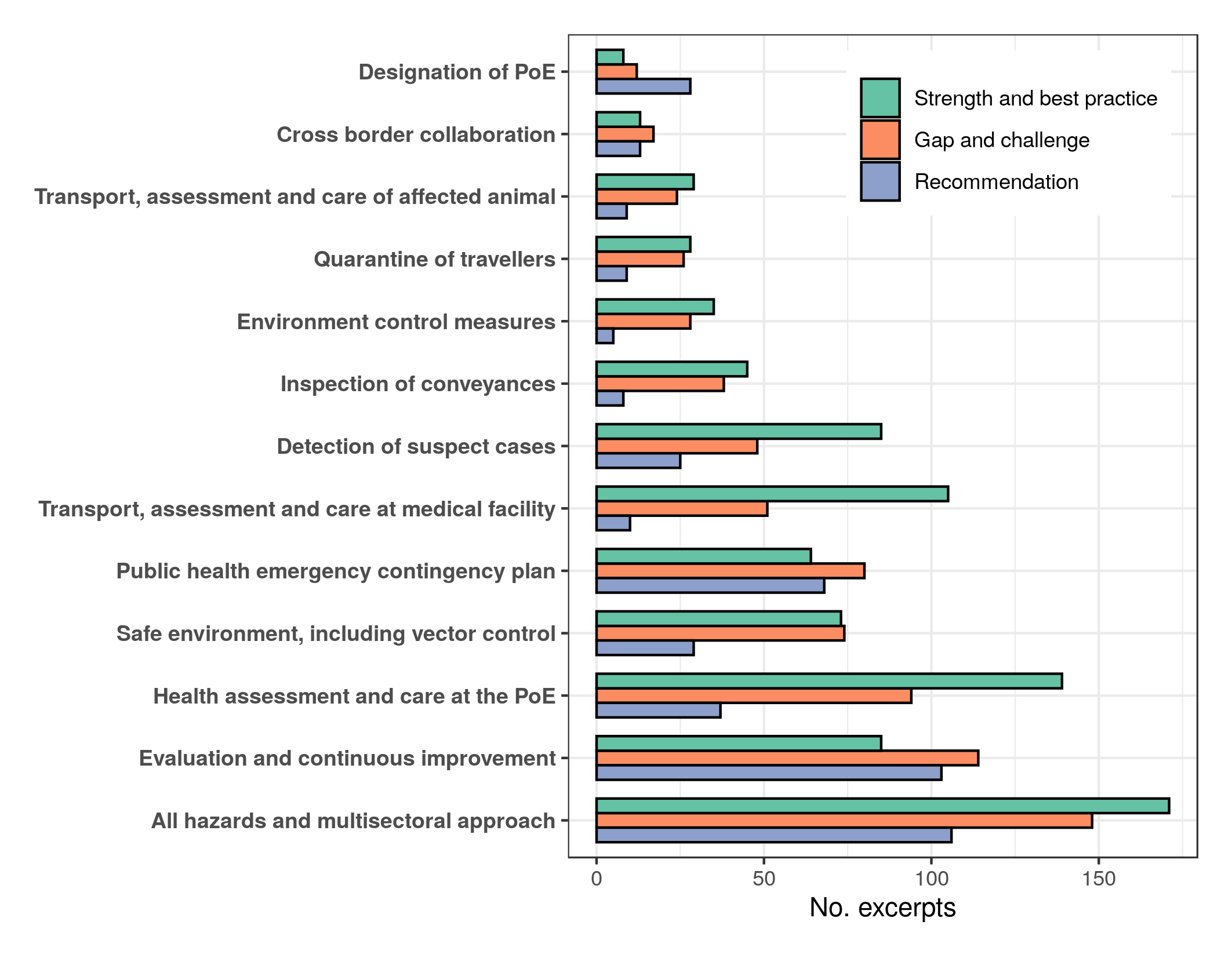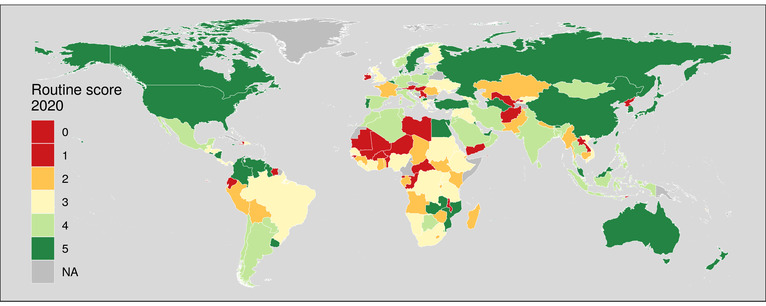Analysis of IHR core capacities at points of entry
Project details
Year: 2021
Client: World Health Organization - Headquarters (Lyon Office)
Objective: Analyse existing capacities and identify gaps and priority activities at points of entry from eSPAR data and JEE missions.
Deliverables:
- Data analysis report of IHR capacities at points of entry and recommendations to strengthen them
- Interactive evidence table in Excel and HTML formats
Performed activities
The International Health Regulations (2005) (IHR) outline obligations and recommendations for countries to better prevent, prepare for and respond to any type of acute public health risk, including at points of entry (i.e. international ports, airports and ground crossings).
The World Health Organization (WHO) has developed the electronic State Parties self-assessment Annual Reporting tool (eSPAR, https://extranet.who.int/e-spar ) and the Joint External Evaluation tool (JEE) to monitor core capacities in the IHR State Parties.
We extracted each reported strength and best practice, gap and challenge, and recommendation from 96 JEE reports using a standardized data collection form. A qualitative analysis of this data was then conducted.

Figure 1. Number of JEE excerpts per topic and type (n=1574 excerpts, one or several topics per excerpt)
We performed a quantitative analysis of the eSPAR data from 194 countries between 2018 and 2020 using the R statistical software.

Figure 2. Self-reported level of IHR routine core capacities at points of entry. eSPAR 2020
We provided a detailed report of the analyses along with interactive Excel and HTML tables including all results.
